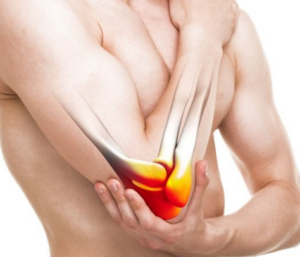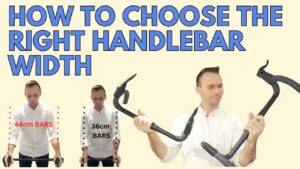A big point of confusion I am seeing early in practice amongst patients is a misunderstanding of what “core strength” is.
We are poorly educated by the media as to what your core is, why it is important, and how it is involved in your back pain. The goal of this post is to educate on the following
- What muscles make up the core and what is their function?
- Why is good core strength and core stability important for the athlete, and non-athlete alike?
- How a lack of core strength has been implicated in low back pain.
Subsequent posts will focus on what one can do to improve their core strength. Understanding the core is almost too complicated to cover in one post as makes up the majority of first year of chiropractic college biomechanics.
Here are some common myths about the abdominal muscles, core strength and the relationship between core dysfunction and pain.
If you are overweight or you do not have a six-pack, your core is weak.
- FALSE!Theabdominals and core musculature do not have to be visible to be strong. Being skinny does not equate to greater core strength.

World’s Strongest Man competitors require incredible core strength to perform these feats. No six-pack here World’s Strongest Man competitors often have quite a bit of abdominal fat but likely have better core stability than 99% of the population.
Core strength is only important for athletes, runners and hard-core sports enthusiasts.
- This couldn’t be farther from the truth. Proper core strength and function is important for low and mid back function, and health. Poor core strength might be the reason why 80% of our population experiences low back pain in their life.
Doing sit-ups will help get rid of my tummy and are good for the core.
- This concept is one of the most detrimental myths in the eyes of a chiropractor. During exercise, fat is not preferentially burned according the muscles being utilized. A leg workout will not necessarily burn more adipose tissue (fat) in the legs or buttock. A core workout may be just as likely to burn upper or lower body fat, far away from the tummy. A well designed cardio or weight training program will be much better at removing any abdominal fat than sit-ups without hurting your spine.

The more the spine is forced to flex, the greater the strain on the spine and its structures. Sit-ups are all flexion - Sit-ups have been repeatedly identified as a potential trigger and cause of low back pain due to the high stress they place on the intervertebral disc between your vertebrae. The repeated flexion and compression forces they cause are a recipe for low back pain when repeated frequently.

For the sake of simplicity, the “core” is located between two diaphragms. It extends from the diaphragm muscle at the base of the lungs and rib cage, which is the primary muscle of breathing, to the pelvic floor. The pelvic floor muscles include the levator ani, coccygeus and connective tissue at the base of the pelvis that stop your organs from falling out.
Wikipedia defines the core as anything other than the limbs but I would rather you consider that any muscle located between these two boundaries is essentially the core. Most people know the ones in the front of the body including the rectus abdominus (the 6-pack muscle) and the internal and external oblique muscles (wrapping from the side of the abdomen towards the midline). Did you also know that there is another muscle deep to this latter set of muscles known as the transverse abdominus as well!

However, the core is best thought of as a corset that connects the upper and lower limbs together and

surrounds the spine in the middle. Thus the muscles of the back including the superficial paraspinal muscles (the back muscles you can see) and deeper ones are also a component. The muscles that surround the hip bones, including the gluteus muscles (maximum, medius and minimus) are included too.
To illustrate how complicated spinal anatomy and discussing the core is, consider that this is the full list of core muscles– iliopsoas, quadratus lumborum, iliocostalis, longissums, spinalis, multifidus, rotators brevis and longus, gluteus maximus, gluteus medius, gluteus minimus, iliopsoas, interspinales, intertransversarii, latissimus dorsi, serratus posterior inferior, pelvic floor muscles, rectus abdominus, the obliques, transversis abdominus. Fun
What is important for the average person to understand is that the core muscles have one of two roles. Some of these muscles are responsible for producing larger movements of the body. The rest are for stabilizing the spine and its tissues, like a corset during movement.

Generally the larger the larger muscles like the gluteal muscles, the latissimus dorsi, iliopsoas, and superficial paraspinal back muscles produce gross movements, like moving the limbs or trunk. The smaller muscles of the back and the abdominal muscles on the front of your body keep the spine, the discs between the vertebrae and the nerves from shifting around too much.
While the anterior abdominal muscles do not stabilize the spine through direct attachments, they complete the corset and increase pressure in the abdomen to maintain proper spine control.
The diaphragm also plays an incredible important role. Its direct attachments to the spine make it an important spinal stabilizer to begin with. It also is important in generating and maintaining intra-abdominal pressure with the rest of the core-corset. The intra-abdominal pressure produced, acts to stabilizes the spine in space during simple or explosive movements. In this latter function, the diaphragm acts like a plunger pushing down the abdominal contents from the thorax to stabilize the spine.


When everything is functioning well, the core performs functions like:
- Keep the spine stable and the upper body from toppling over
- Allow forces to be transferred between the upper and lower limbs.
- Protects the organs of the abdomen
- Allows you to breath properly through control of the diaphragm
In example, a baseball a pitcher pushes off with their back foot to generate force. This force is transferred and magnified by strong core muscles and eventually applied to the ball leaving from the tips of their fingers of the opposite hand. All the force initially comes from the lower limbs and can only reach the ball because of the core muscles.
Like every muscle in the body, those of the core need to be exercised and strengthened in order for them to remain functional. However in a society where
 the World Health Organization has declared “sitting is the new smoking” and we are more and more sedentary, most fail to maintain adequate core strength. As a result low back pain is one of the leading causes of disability.
the World Health Organization has declared “sitting is the new smoking” and we are more and more sedentary, most fail to maintain adequate core strength. As a result low back pain is one of the leading causes of disability.
Research has shown that a large percentage of low back pain results from deconditioning of the core, where the small muscles of the low back that attach directly to the spine fail to properly stabilize the spine. The larger core muscles meant for gross movement are not built to adequately take over this role.

Consequently, the spine becomes functionally unstable, the vertebrae move just a small distance outside of their normal range of motion and become irritated by casual movements. If you have ever experienced low back pain from the simplest of movements, like bending over to pick something up or transitional movements between lying, sitting or walking, than this is likely the problem. When the core is strong and has the ability to act like a corset and
hold the spine in the correct position, low back pain is less likely to result. The physiology is loosely analogous to Jenga. Without a box around the Jenga blocks to hold them stable in place , they shift around with each poke and prod, and eventually tumble-down. The core is the box that contains the spine and that keeps it from falling apart.
Some interesting notes from the literature to show the importance of core deconditioning and low back pain
- chronic low back pain sufferers show deconditioning and a moth-eaten pattern of wasting in the lumbar multifidus on MRI
- Follow up studies have shown that this wasting occurs very quickly with acute onset of low back pain and reinforces the need to seek treatment and perform rehab quickly.
- healthy subjects that demonstrated unequal strength ratios of core strength (back versus front versus side musculature) are more likely to go on to get low back pain
- chronic low back pain sufferers display different diaphragm breathing patterns, which highlights the importance of correct breathing mechanics for treating and preventing low back pain

This revolutionary study demonstrated that low back pain sufferers fail to properly activate their core prior to moving the limbs and suggested that core weakness was a primary cause of low back pain - low back pain sufferers display different core muscle activation patterns than those without low back pain
The science really speaks for itself and this is just a handful of the dozens if not hundreds of similar papers!
To summarize, the muscles between the pelvic floor and the base of the rib cage make up a tight corset of stabilizers for the spine, which helps to transfer forces between the limbs and keep the spine in proper alignment.
The biggest thing I would like my patients to understand is the importance of core strength for general health and sports performance. Since most (if not all of us) exercise to look better and thus focus on the muscles and body regions that are seen most, core strengthening is often overlooked. There are to many back, arms, legs or chest workout days and not enough core days. We need to have more core days!
The simple exercises needed to strength the core can be performed by anyone and they are relatively easy. I am even finding that lots of patient who regularly work out or do Crossfit do not have adequate core stability. In the end it is something that we can all improve upon and add to our routines.
Come back next week for a follow-up article on core strengthening exercises to get you started or to add core work to your existing gym routine




